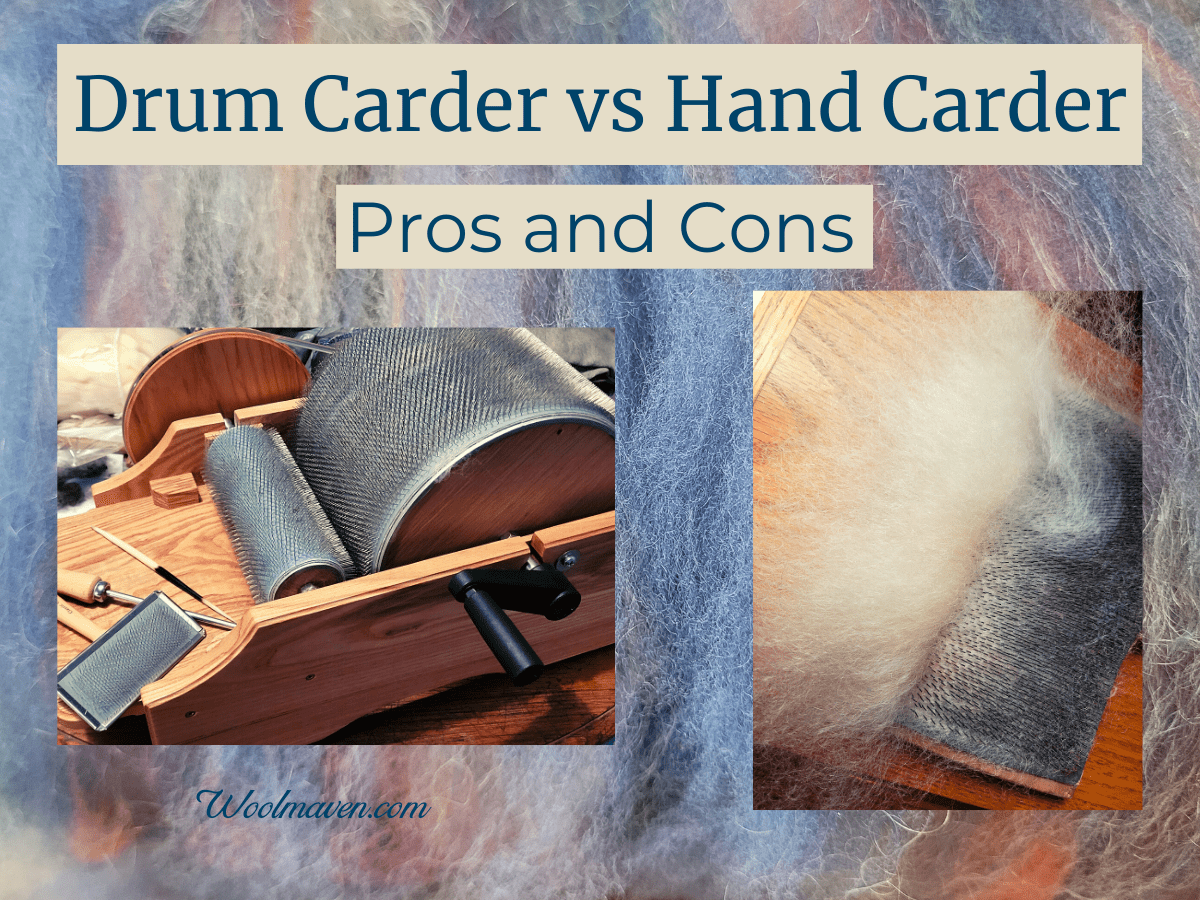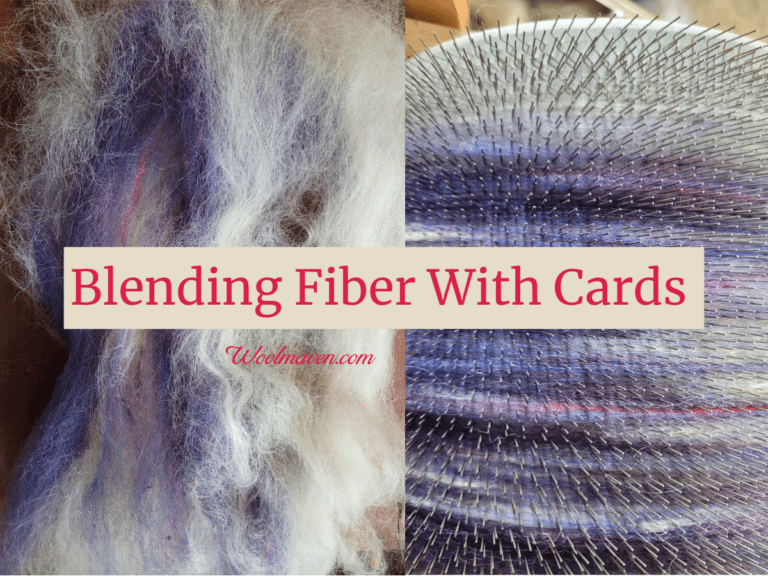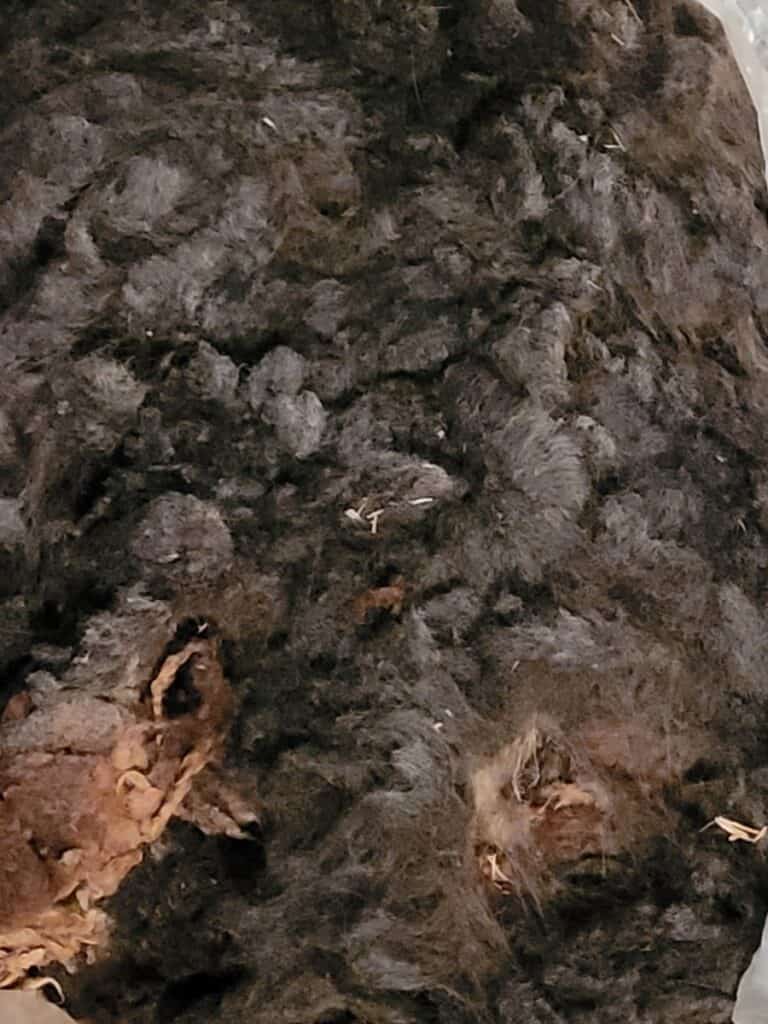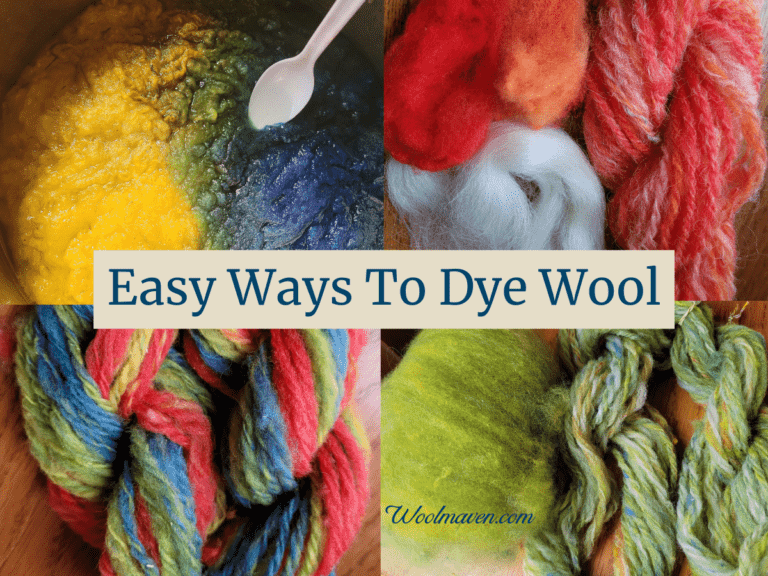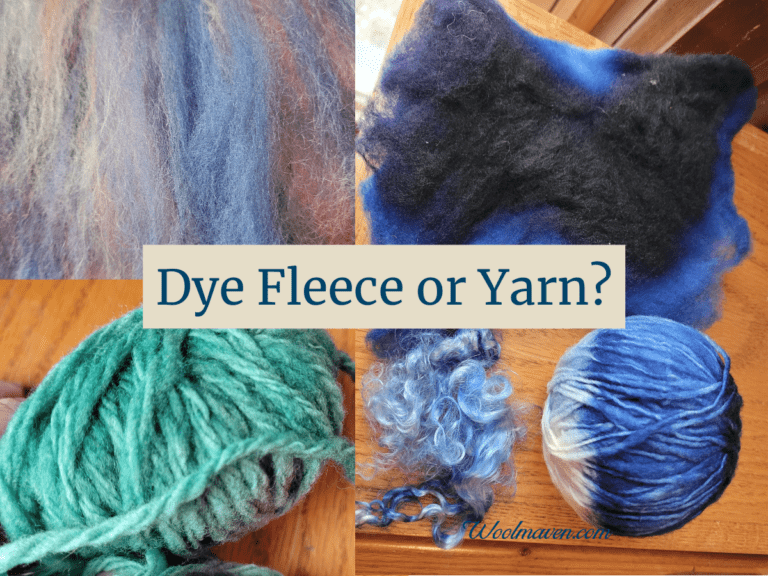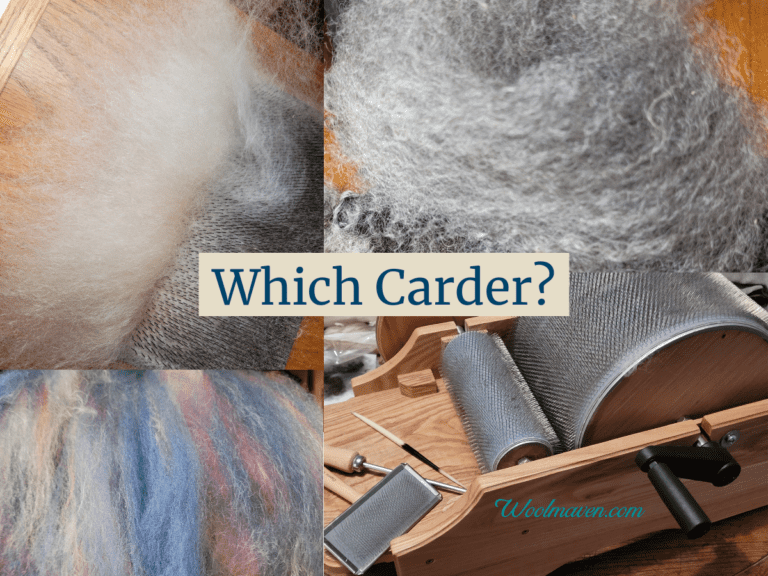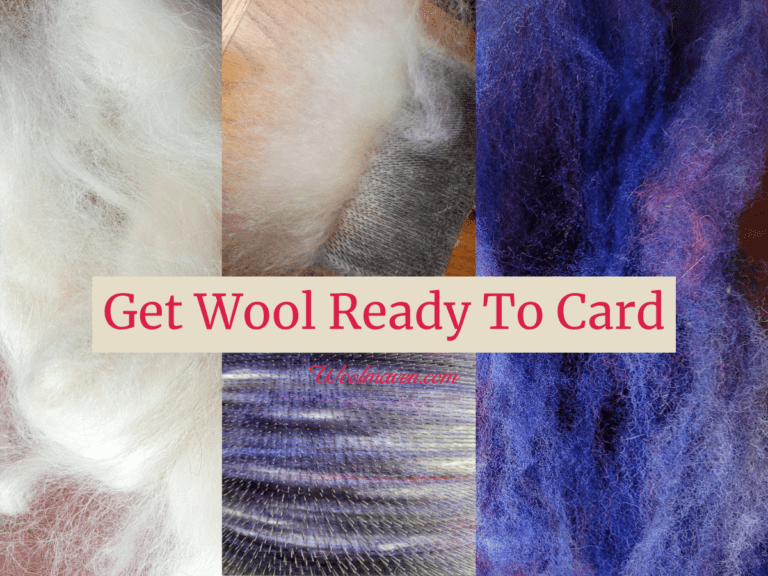Pros And Cons Of Drum Carders vs. Hand Carding
Hand carders or drum carders, which will you get the most use out of for your handspinning projects?
Really, that depends upon what you like to spin and how you want to prepare those fibers!
So here’s a pros and cons list made from my experiences using both, to help you decide which carder will work best for you.
| Fiber preparation needed | Drum carder | Hand carders |
| high volume of fiber to card | ideal | slow |
| small or test batches | not ideal | ideal |
| blend fibers or colors | yes | yes |
| longer roving | yes | no |
| easily portable | no | yes |
| large batts | yes | no |
Is A Drum Carder Worth It? goes over the costs and benefits of drum carders.
This post contains affiliate links, which means I receive commissions if you choose to purchase through links I provide (at no extra cost to you).
Pros of Drum Carders
Drum carders have countless raving fans (like me!) who use a drum carder as the fiber preparation tool of choice. Check out the Ashford Drum Carder, it’s a wonderful carder that’s easy to use.
Here are a few of the reasons why handspinners love drum carders:
- blends nearly anything
- easy to use
- makes enough for one project
- easy to recreate blend
- can make patterns like stripes or gradients
- can well blend different fibers
- can also paint fiber on swift
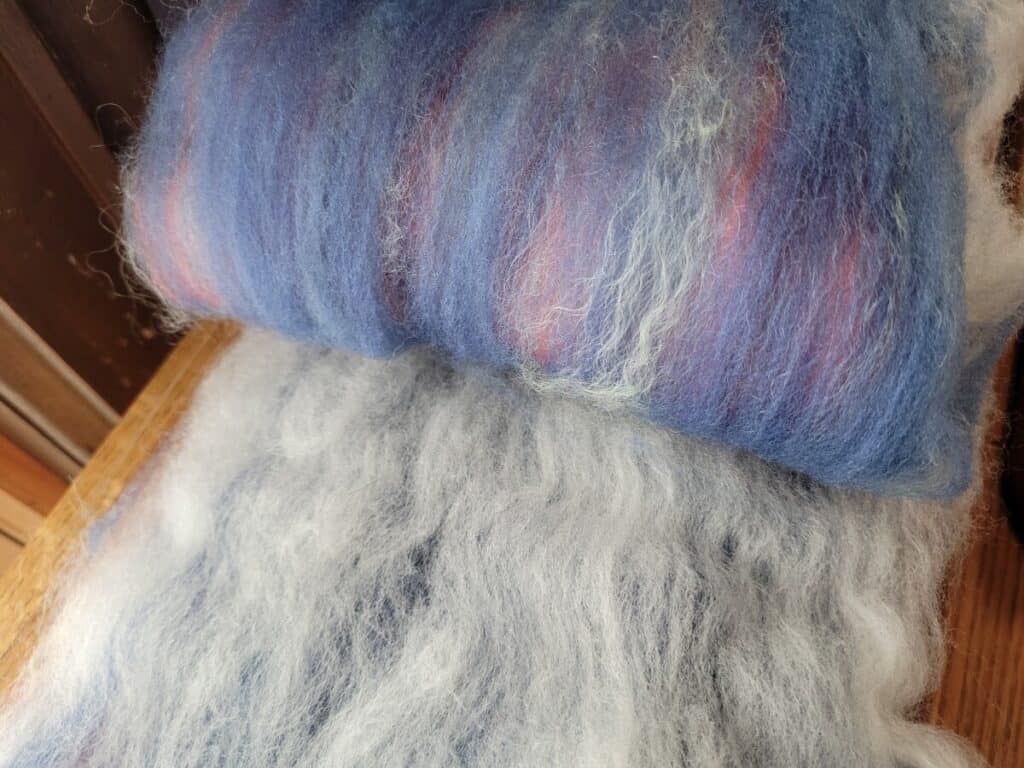
Blend almost anything
You can put together a blend of just about anything in your drum carder!
I routinely combine mohair and both dyed and undyed wool to make unique to me yarns. I love adding the mohair for just a bit of shine and strength, nice!
Drum carders can easily handle different fiber types and lengths that I would have more trouble working with on my hand carders.
To be fair, this could be my lack of skill or practice with the hand carders!
Whatever the reason, the drum carder gives me a larger range of possibilities with my handspinning fibers at my current skill level.
How To Blend Mohair gives you some tips on using mohair in your yarns. I’m fairly new to mohair and having a great time with it!
Drum carders are easy to use
Drum carders are easy to use, you just put a thin layer of fiber on the tray and turn the handle, that’s it.
Blending different fibers, like different wools or colors, is easy, the drum carder just does it for you.
If you want more blended look, split up the batt and run it through again.
My 3 1/2 year old granddaughter helps me blend fibers on mine, she seems to get a kick out of using it and we make a batt every time she comes over for the day.
She’s great with turning the handle and we’re working on her doffing skills. It’s fun for both of us!
Drum carders make larger batts
One of the best things about a drum carder is that you can easily make larger batts for your spinning projects.
If you want to prepare enough of a fiber so that you can do all of your spinning for that project without doing more carding, you can.
One or two batts will make your small and mid size projects. Larger projects will take more batts, no problem!
My drum carder has a bit of extra capacity, so I can have all of the fiber for a small project, like a hat, from the same batt.
The description of the drum carder will tell you about how much fiber is normally in a batt, so you can get an idea of what size you need.
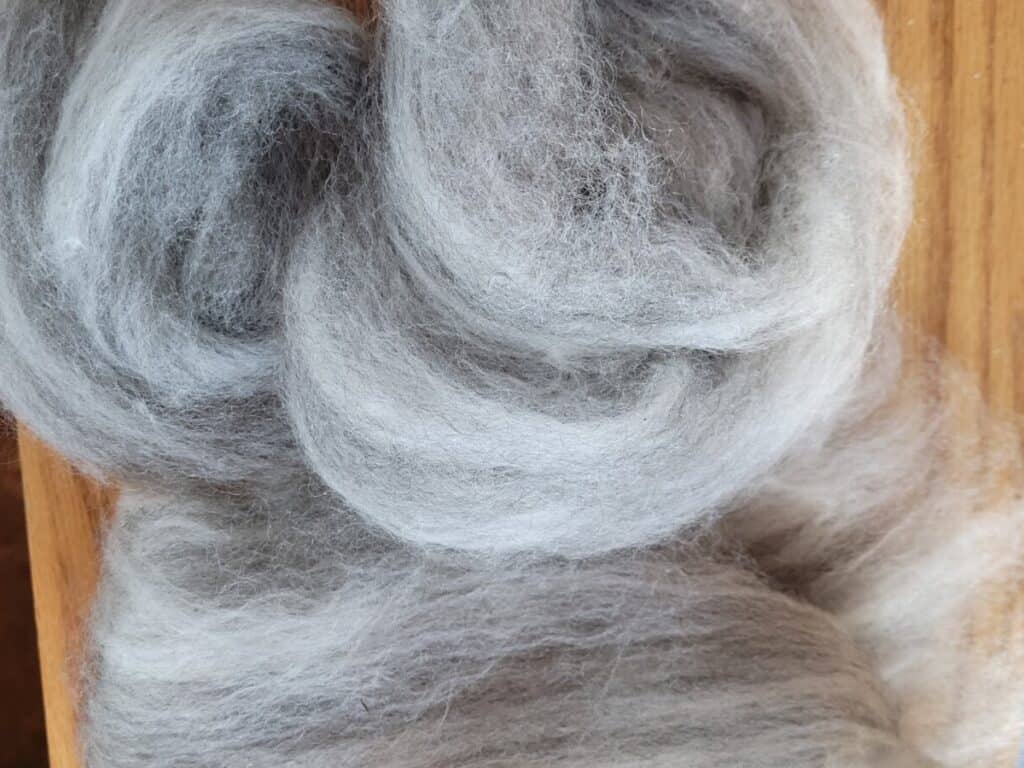
Can recreate blends
You can recreate blends or patterns, like a gradient, that you make on your drum carder.
Of course, this will mean keeping track of what you did in the first place, taking a picture or two and keeping samples as you go, but it’s doable and practical.
That beautiful blend is now yours anytime you are willing to use the recipe and cook it up!
Cons of Drum Carders
As much as I love my drum carder, there are a few not so great points about using it for fiber preparation.
Here are some of the down sides of using a drum carder:
- cost
- portability
- cleaning
- finer fibers stick on licker drum
- must add fiber slowly
- small batches are harder to remove from drum
Drum carders cost more
The biggest con of a drum carder is initial cost, they are very pricey compared to hand carders.
My drum carder cost $621.35 once I included shipping and the two optional brushes that go with it. Without the brushes, it would have been around $40 less.
$621.35 for the drum carder makes the hand cards that cost from $57-89, from 9-14% of the cost of the drum carder. That’s a big difference!
I purchased the drum carder that I liked and was in stock. There are certainly more expensive drum carders available, especially if you go with a motorized one.
Like most other spinning and fiber preparation equipment, you should only have to buy this thing once, but you do have to cough up all the cash in the beginning!
Drum carders lack portability
While drum carders are technically portable, there is nothing stopping you from grabbing it and walking off into the sunset, it will be awkward to carry this one around.
If you are needing a drum carder that can be moved about quite frequently, look to a smaller model, made to be more portable or use hand cards for the trip.
Cleaning can be frustrating
Some drum carders are frustrating to clean for two separate situations: stray fibers on the drums and fibers wound around the shaft.
Each time you use the drum carder you run the risk of having some of the fibers you are carding stick to the drums, normally the swift (the big drum) but sometimes both.
These are not hard to clean out, just tedious.
If you are making more of the same blend or with some of the same fibers, you can leave the left behinds until the end of your carding.
If you don’t want those fibers in your batt, they have to be picked out with your quill or something small and sharp that will not bend the tines on the carding cloth.
Smaller batts seem to leave more fiber behind, I think it’s because they are less well packed to begin with.
The other stray fiber issue is if you get fiber down over the edge of the drum and on to the shaft, which will eventually gum up the works and will needed removed.
Taking this apart, cleaning it and putting it back together right can be a mess. Take care when carding to keep the fibers on the drum or you’ll wish you did!
Fine fibers can stick to licker
I have found that finer fibers can stick to the licker drum (small drum) when you are feeding them in, especially well fluffed fiber.
Many carding enthusiasts fix this problem by putting the fiber directly on the swift as it turns, rather than putting it through with the licker drum.
Anything really fine that you add to your batt has a tendency to stick to the licker, things like sparkle, angora or finer mohair.
Must add fiber slowly
You must add fiber slowly to the drum carder. This is a surprise, since the drum carder looks so big, you think that it can just take all the wool at once, not so!
You have to add the fiber in small layers and build up as you go.
Otherwise, you’ll end up putting strain on your carder as you try to pull through the fiber rather than gently card it.
Small batches hard to remove
A final fairly small issue with the drum carder is that small batches are harder to work with and definitely harder to remove from the drum.
I think this is due to the fibers not being well packed together, so when you doff the batt (take it off the swift) you leave behind more fiber wisps.
You can fairly easily remove these or just use them in the next batt, but if you want them gone, it’s another job to do before you can spin.
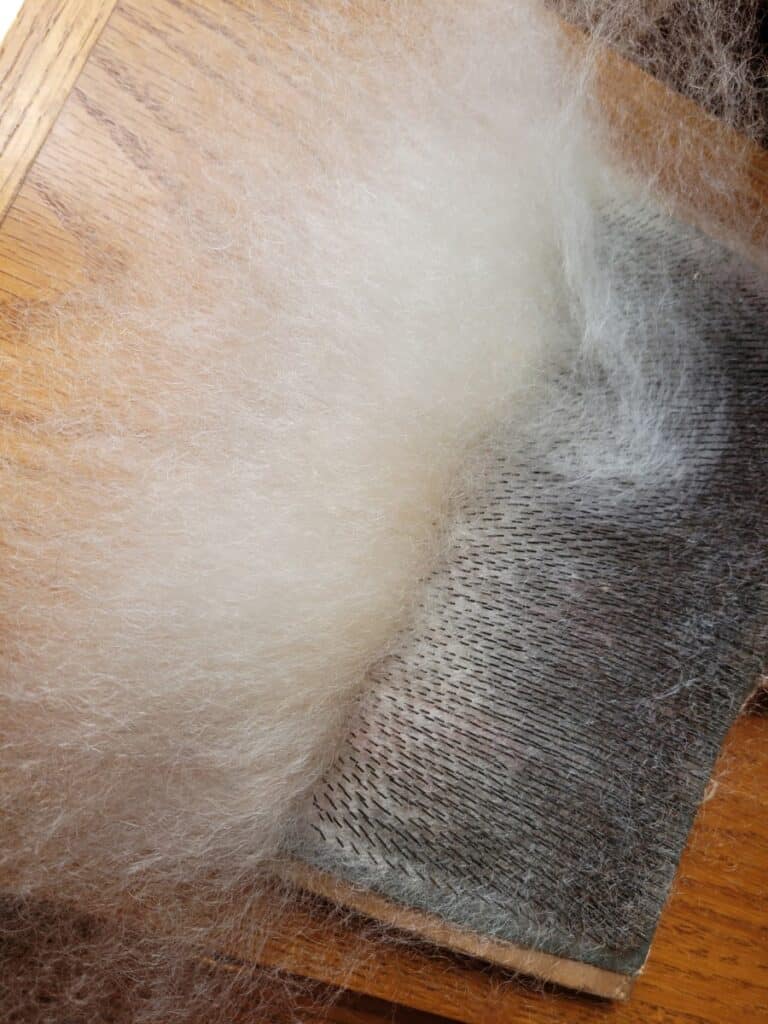
Pros of Hand Carders
The hand cards that I use are Clemes & Clemes Curved Back Wool Cards. I’ve had them for almost 20 years and use them for all of my hand carding.
The main pros of hand carders are:
- great start to preparing your own fiber
- less expensive
- portable
- nice for test blends and ideas
Do You Need To Wash Wool Before Carding It? will give you some tips on what to look for in your wool to see if you can spin it in the grease.
Great starter for wool preparation
When you are just getting started with preparing your own fiber to spin, it’s nice to start with something a bit less intimidating, like hand carders.
With a small amount of instruction, just watch a few videos, you’ll be good to go. Pro tip: do not scrape the cards across one another, it’s more of a rolling motion.
I have the curved type of hand carders and tend to get better results when I think of making a galloping motion, like a running deer, while I’m carding rather than a rolling motion.
Less expensive than drum carder
Hand carders are much less expensive than a drum carder.
Of course, prices range depending upon what you decide to compare and buy, but 10% is a good average.
Nice size for test blends and ideas
I like to use the hand cards for test blends or to see if two or more fibers work well together in a test spin, before I have a whole batt of something I’m not very fond of.
Of course, you could adjust the blend on the drum carder, but I prefer to start smaller and work from there.
This is especially true if I am working with a limited fiber and need to keep my test batch small so I have enough of the fiber for the project.
Hand carders are portable
Hand carders are also portable! You can put your hand cards in a backpack or a larger purse and take them along with you to your fiber gatherings.
As much as I love the drum carder, it would not be sharing backpack space, that’s for sure!
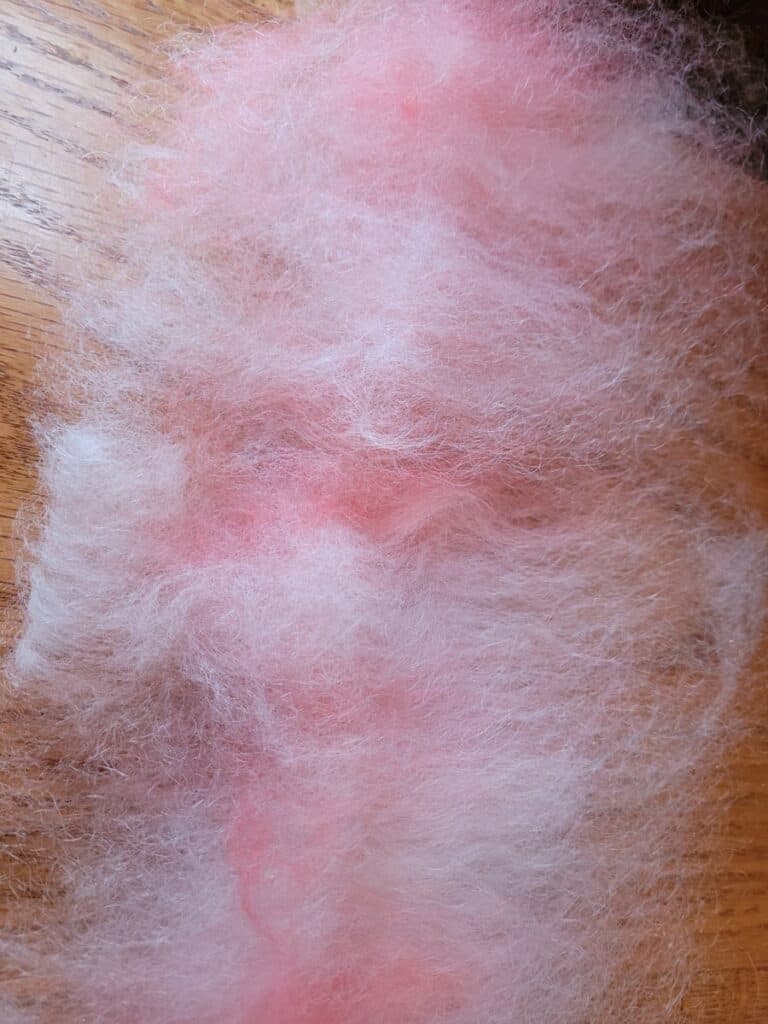
Cons of Hand Carders
Hand cards, while wonderful at what they do, for the most part, are not ideal for all of your carding needs.
Here are some of the times when carding is better done with something other than hand cards:
- need practice to use well
- small batch sizes
- harder to make art batts
You need to practice to use hand cards correctly
You need to practice using hand carders to work with them correctly. By correctly, I mean use them in a way that does not damage or bend the tines.
The first thing that you may not know about hand cards is that, despite what you think and what they look like, you do not drag them across one another. Yikes!
You should hear little to no scraping noises while carding!
Have someone show you how to use the hand cards or watch a few videos and follow along, you’ll get the idea fairly quickly, but it will take some practice.
Here’s a tip: when you are using the cards, think of galloping the top card over the bottom one. Some folks say rolling, but galloping is a better description to me.
Hand carders make small batts
There is no getting around it, hand carders make smaller batts of carded fiber than you get from a drum carder, much smaller!
Sometimes this is fine, like when you are testing out a new idea, but when you want to card fiber for a larger project, it seems like you are carding forever!
Hand carders are not ideal for art batts
Art batts, the crazy almost anything goes spinnable batts that folks like to make are going to be tough, if not impossible, to make with your hand cards.
You could go with a blending board, instead, or a drum carder, but putting in a bunch of crazy stuff with your fiber on hand cards is going to damage the tines and frustrate you!
My drum carder experience
First off, let me just say it: I love my drum carder!
I normally go minimal on spinning equipment (I’m really not much of a shopper), but I splurged here and am really, really glad I did!
This thing is wonderful and has totally changed the fibers that I have available to spin. I can blend up whatever I want, just to see what happens.
I’m making truly beautiful batts that I was never able to get before I bought the drum carder.
It’s like the world of handspinning possibilities has just opened up for me.
I have to admit, if I just want to do a small test batch of a new idea, I tend to use the hand carders, since they work well with a smaller amount of fiber.
I also use the hand cards or the flick carder to open up fibers, if they need it, before putting them through the drum carder.
Of course, I did make it 20 years without a drum carder, but wow, is it nice to have!
The Joy Of Handspinning has a nice article with video links on using hand cards.

